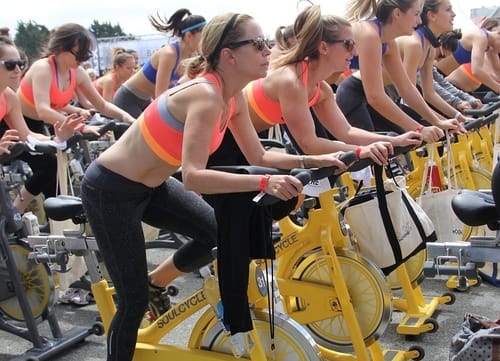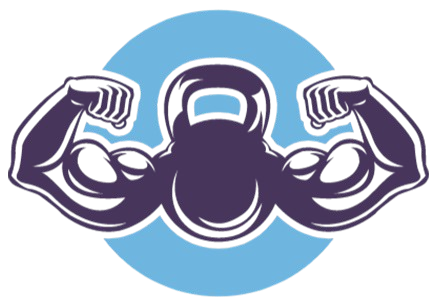Fitpro Income
Calories Burned In Spinning Classes: The Numbers Revealed
Spinning is one of the most intense and strenuous group exercise classes you can take part in.
For some, spinning is all about the atmosphere and getting a great workout done in a short period of time, but for others, it’s all about burning calories. So, how many calories are burned in a spinning class?
It’s going to depend on a few factors, but don’t worry, in the article below I will be giving you a very good idea of just what you can achieve.
Sound good?
Let’s go…

You’ve probably heard amazing things about what spinning classes are, and the incredible results people have got in just a few months of sessions.
Body transformation articles are posted all over the internet as a result of taking up regular spinning classes, but is there any truth behind these stories, and can spinning really be that beneficial?
Well, the good news is that yes, spinning can be incredibly beneficial to not only your health in general but also as a great weight loss aid. So let’s dive into some of the numbers and start exploring what kind of results you can expect.
How many calories do people burn in a 30 minute spin class?
An average male will burn between 483 calories per 30 mins spinning class when bouts of high intensity are added into the session. Females burn 415 calories for the same workout. This is calculated using the formula calories burned per minute = (MET x bodyweight in Kg x 3.5) ÷ 200.
You may well be surprised at how high that number is, or you may be a little disappointed.
You see, 400 or so calories is a hell of a lot to burn in a single session, but, it’s the same amount you’d get in a chicken and bacon sandwich with a small bottle of orange juice. It might not seem fair that you have to put in so much effort to burn off what appears to only be one small meal.
The good news is that that’s not really how you should see food and calories if you are trying to lose weight. It’s all about calories in vs calories out, and if you’ve just burnt off what would have been your entire lunch, it’ll be much easier to stay in a calorie deficit than if you hadn’t taken the class, as it’s almost as if that meal never happened.
A calorie deficit just means that you ate fewer calories than you burn off in a day, and that’s the very simplified explanation of how you lose weight.
How you can burn more calories
Let’s be honest, 400 calories in a half-hour workout is pretty incredible, but how can you boost to get those numbers up?
Well, your first option is to increase the intensity at which you’re working. You can either do that by increasing the resistance you’re working against by turning up the resistance dial on the bike, or your second option is to increase the speed at which you’re pedaling.
If you needed even more of a workout, you could add your own additional exercises by turning the resistance to nearly its maximum and doing push-ups on the handlebars whilst you pedal.
You’d usually want to do that when you’re training on your own because if you start adding additional exercises into a group class you could anger the instructor by making them feel like they aren’t giving a tough enough session.
The warning that comes with this is to not go too hard too early on or you might find yourself seriously struggling to finish the class or your own 30 min workout at home.
Don’t burn out too quickly!
How many calories is it safe to burn at one time?
This ties in nicely to my previous point about burning out too quickly.
More is not always better, and in the case of weight loss, this holds true. It’s easy to get very excited by the amount of weight you can lose when you start learning about how many calories equals a pound of fat for example.
However, if you start trying to burn too many calories in a day, you could put yourself at some serious risk of burning out and overtraining, which leads to some pretty unpleasant side effects that can take months to correct.
If you are very overweight you can get away with burning more calories each day safely than a learner person. So, in essence, the leaner you are starting off, the fewer calories you can afford to safely burn each day.
For weight loss, you should aim to be in a deficit of between 400-500 calories each day. This amount will help you to safely achieve roughly 1lb per week.
Remember that not all these calories need to come from exercise, your diet plays a big part too.
Do spin classes burn more calories than outdoor cycling?

According to caloriesburnedhq.com an average male of 198lbs cycling at 16 kph over a distance of 7 miles (30 mins worth) burns around 472 calories, which puts it at almost exactly the same as in a spin class.
So how can this be? Surely you must burn more if you’re sweating like crazy and using hill sprints?
In road cycling, you are moving at a near-constant pace, whilst still needing to tackle naturally occurring obstacles like hills. The combination of a constant speed with hill climbs makes for a pretty intense workout, even if you aren’t dripping wet in your first ten minutes.
Bear in mind that in a spin class you will have periods of rest where you are working at a very low resistance, whereas this is missing from outdoor and road cycling.
So in the end, road cycling and spinning classes end up being pretty much the same in terms of calories burned, one is certainly safer than the other, but it’s really down to personal preference.
Is spinning better than running?

Ok, so what about running? surely a crazy intense spin session has got to burn more calories than running, right?
Once again, according to caloriesburnedhq.com a half-hour run of an average male traveling a distance of 3 miles at a pace of ten minutes per mile burns around 462 calories.
Shocked by this?
Well, it’s just like our road cycling scenario above, with running you are usually working at a consistent pace for the entire time you’re exercising.
Spinning may feel harder as you are training by using intervals of intense exercise mixed with lower intensity recovery periods, but it’s the consistency that keeps the calories burning whilst you’re running.
Here’s the good news!
Don’t be too quick to cancel your membership at the spin studio because of the results above, the numbers aren’t quite what they seem.
You see, the way that we have measured each exercise type so far has been taking a 30 minute exercise period and comparing the calories burned of each during that 30 minutes, and as you’ve seen, they all end up at roughly the same number of calories burned.
However, what we haven’t taken into account is any of the after-effects of training in a HIIT or (high-intensity interval training) style, such as the potential to build muscle mass (due to increased human growth hormone output) and increased metabolism for hours after the exercise has ended.
Running and cycling are great cardio workouts, but they aren’t hugely taxing on the body. If they were, not nearly as many people would travel to work using them. They are low-intensity exercises, whereas training in a HIIT style of constant high and low intensities (what your basic spin class is made up of), is far more taxing on the body.
This means it takes a lot of effort for your body to reach its resting state after a HIIT workout, so you will be burning calories for hours after the actual workout has finished. This is how spinning classes beat other exercise types in terms of calorie expenditure, it plays the long game!
Conclusion
I hope today’s article has given you a more clear idea of how many calories are burnt in a spinning session, but more importantly, how effective they can be as a way of losing weight.
Just remember not to overdo it on the bikes, I’ve burnt out before from overtraining, and I can assure you it’s no fun at all.
Have a great day!
Go get ’em!
